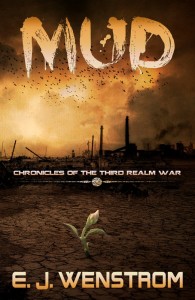By E. J. Wenstrom, @ejwenstrom

I love to write in first person. It’s the closest I can get to my characters. You don’t just follow the character’s actions in first person—you’re right there in their head, living the story along with them. You get every flicker of thought and twist of emotion. It’s deep and consuming.
But when you get that deep into a character’s perspective, how do you shake yourself free and make the switch to a new character? As I finished my first novel and tried to start a new one, I’ve found this is easier said than done.
I spent five years with the narrator of my first novel. Every morning I got up, turned on the coffee and spent 45-60 minutes writing in his voice. This protagonist’s voice was burdened, vulnerable and highly emotive. I came to love this character and, quite frankly, got pretty deeply attached to him.
Then, finally, that book was done. It was in my editor’s hands, and I needed to start something new.
My new story’s protagonist is totally different—she’s a sheltered teenage girl with a big attitude and a lot of reasons to be angry. I’ve also shifted genres, from dystopian fantasy to YA sci-fi. For all these reasons, the voice of my new narrator needs to be strikingly different from my last one.
I struggled a lot to get into my groove with this new protagonist after spending so long writing in a totally different voice. But I did finally find my stride. Here are some of the ways I broke free of the old and tapped into my new hero’s voice.
Set the tone with music
I generally like to work in true quiet, but when I’m stuck, the right music can get me back on track. One way to create distinct voices for different characters is to set the scene by creating distinct soundtracks for each that capture the story’s tone. Movie soundtracks are especially on point—capturing a mood is exactly what they’re for.
Keep a voice swatch
Some days you’re just on, laying down word after word of perfection. When you get a section like this, copy and paste it into a new document to refer back to when you’re stuck.
Reviewing your previous work can help realign your thinking and get you back to the mental state you were in when you wrote them. Consider it the writing style equivalent of grabbing a paint color swatch from Home Depot.
Create a character board
For this, grab that stack of magazines that’s been slowly eating your coffee table (or maybe that’s just me) and crack them open. Look for key words and images that speak to your character and cut them out. Then, create a collage of all the images on a poster or cardboard and use it as inspiration when you’re stuck.
Go overboard
This is great for when you know what you’re going for, but can’t get the tone to quite stick. For example, maybe you know your character is snarky and swears a lot. Go ahead and hit those point with all you’ve got—exaggerate the style until you find your groove.
Don’t worry about overdoing it—it’s a lot easier to dial it back in editing than to punch it up.
First person narration can be a great tool in the writer’s arsenal. I especially love its immediacy and closeness to the characters. But those same qualities can make it especially difficult to transition between characters and projects.
Don’t let this hold back your writing—try out these tricks the next time you find yourself struggling to tap into a character’s voice.
How to switch between first person voices (by @ejwenstrom): Click To TweetE. J. Wenstrom is a fantasy and science fiction author living in Cape Canaveral, FL. Her first  novel, a dystopian fantasy titled Mud, is releasing this month.
novel, a dystopian fantasy titled Mud, is releasing this month.
When she’s not writing fiction, E. J. drinks coffee, runs, and has long conversations with her dog. Ray Bradbury is her hero.
You can find Mud at Amazon, Barnes and Noble, Kobo, and Goodreads.

Music definitely sets the tone. Clever idea to go overboard with the traits to get the voice right.
I guess that’s why I don’t like to write in first person. I don’t want to be in my character’s head that much.
Thanks for sharing, Alex — we’ve all got our own style!
I think it must be a challenge to switch among first-person perspectives (I write in third, myself). Thanks, both, for these great thoughts on how to use first person more effectively and with more characters.
Thanks Margot! I think it’s really just a matter of preference. I’ve struggled to maintain a third-person perspective and almost always end up in first-person in the end.
A character board would really help. I need to see my characters, which is why I always find an image as soon as possible. Then I can picture them, see them acting, and hear them talking.
I’ve seen some authors do some really cool stuff using Pinterest as a tool for this too … and it simultaneously builds excitement from your next release!
[…] Check it out here. […]